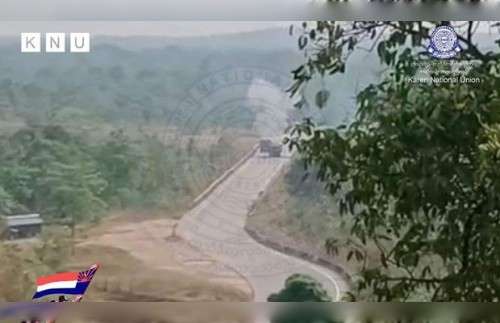A meticulous re-creation of a three-decade-old study of birds on a mountainside in Peru has given scientists a rare chance to prove how the changing climate is pushing species out of the places they are best adapted to.
Surveys of more than 400 species of birds in 1985 and then in 2017 have found that populations of almost all had declined, as many as eight had disappeared completely, and nearly all had moved to higher elevations in what scientists call “an escalator to extinction.”
 “Once you move up as far as you can go, there’s nowhere else left,” said John W. Fitzpatrick, a study author and director of the Cornell Laboratory of Ornithology. “On this particular mountain, some ridgetop bird populations were literally wiped out.”
“Once you move up as far as you can go, there’s nowhere else left,” said John W. Fitzpatrick, a study author and director of the Cornell Laboratory of Ornithology. “On this particular mountain, some ridgetop bird populations were literally wiped out.”
It’s not certain whether the birds shifted ranges because of temperature changes, or indirect impacts, such as shifts in the ranges of insects or seeds that they feed on.
These findings, published recently in the Proceedings of the National Academy of Sciences, confirm what biologists had long suspected, but had few opportunities to confirm. The existence of a 1985 survey of birds on the same mountain gave scientists a rare and useful baseline.
Past research has documented habitats of birds and other species moving up in elevation or latitude in response to warming temperatures. But Mark Urban, director of the Center of Biological Risk at the University of Connecticut, who was not involved in the study said it was the first to prove what climate change models predicted: that rising temperatures will lead to local extinctions.
“A study like this where you have historical data you can go back to and compare is very rare,” said Urban. “As long as the species can disperse, you will see species marching up the mountain, until that escalator becomes a stairway to heaven.”
In 1985, Fitzpatrick established a basecamp alongside a river running down a mountain slope in southeastern Peru, aiming to catalog the habitat ranges of tropical bird species that lived there. His team spent several weeks trekking up and down the Cerro de Pantiacolla, using fine nets called mist nets to catch and release birds, and keeping detailed journals of birds they caught, spotted or heard chirping in the forests.
Two years ago, Fitzpatrick passed his journals, photos and other records to Benjamin Freeman, a postdoctoral fellow at the Biodiversity Research Centre at the University of British Columbia. Freeman, who has been researching tropical birds for more than a decade, set out to recreate the journey in August and September of 2017. Using old photos of mountain views, his team located the same basecamp.
Freeman largely recreated Fitzpatrick’s path and methodology to see what had happened in the intervening years, a period when average mean temperatures on the mountain rose 0.76 degrees Fahrenheit (0.42 degrees Celsius). Because the mountain lies at the edge of a national park, the area hadn’t been disturbed.
In addition to unfurling 40-foot (12-meter) mist nets on the slopes, Freeman’s team placed 20 microphone boxes on the mountain to record the chirps of birds that might not easily be seen.
“We found that the bird communities were moving up the slope to reach the climate conditions to which they were originally adapted,” said Freeman, the lead author of the study. Near the top of the mountain the bird species moved higher by 321 feet (98 meters), on average.
“We think temperature is the master-switch in explaining why species live where they do on mountain slopes,” said Freeman. “A huge majority of species in our study were doing the same thing.”
Birds adapted to live within narrow temperature bands — in regions without wide seasonal variations — may be particularly vulnerable to climate change, Fitzpatrick said.
“We should expect that what’s happening on this mountaintop is happening more generally in the Andes, and other tropical mountain ranges,” he said.(Source: VOA NEWS)









